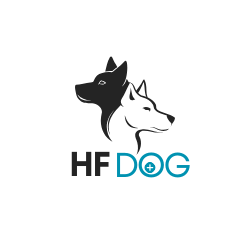Capstar Vs Nexgard
In the world of flea and pest control for pets, the comparison between Capstar vs Nexgard unveils distinct characteristics that cater to varying needs. While Capstar swiftly tackles adult fleas, Nexgard extends its shield to ticks and prevents flea reproduction. The choice between these two treatments extends beyond mere effectiveness; factors like administration ease, taste preferences, and long-term prevention capabilities come into play. As pet owners navigate this decision-making process, the optimal choice hinges on a nuanced understanding of their pet’s requirements and lifestyle. The ongoing debate of Capstar versus Nexgard is not just about eradication efficiency but also about comprehensive protection and convenience.
Key Takeaways
- Capstar provides rapid adult flea elimination, while Nexgard offers broader pest protection, including ticks.
- Capstar is a single pill, safe for re-administration in the same month; Nexgard comes in chewable form for dogs over 8 weeks.
- Nexgard is generally pricier but provides a wider spectrum of coverage compared to Capstar.
- Consider pet’s age, weight, health status, and infestation susceptibility when choosing between Capstar and Nexgard.
- Veterinarians provide tailored recommendations based on pet’s needs, ensuring optimal health and well-being with the chosen treatment.
Key Differences Between Capstar and Nexgard
When comparing Capstar and Nexgard, it is essential to understand the key differences between these two flea and tick treatments for pets. Capstar is a single pill that quickly eliminates adult fleas, safe for re-administration within the same month. On the other hand, Nexgard not only tackles various pests, including ticks, but also prevents flea egg-laying.
Capstar may need to be hidden in pet food due to its lack of taste appeal, while Nexgard is suitable for dogs over 8 weeks and 4lbs. Nexgard provides protection for a month, whereas Capstar requires re-administration if reinfection occurs. These distinctions play a crucial role in choosing the most suitable treatment for your pet’s specific needs.
Administration and Dosage Variances
Moving from the comparison of Capstar and Nexgard, a critical aspect to consider is the differing administration and dosage variances between these two flea and tick treatments for pets. Capstar is administered as a single pill for rapid adult flea elimination and is safe for re-administration within the same month if needed.
On the other hand, Nexgard comes in a chewable form and provides coverage against various pests, including ticks, while also preventing flea egg-laying. Additionally, the dosage requirements vary, with Nexgard being suitable for dogs over 8 weeks and 4lbs, whereas Capstar can be used on dogs from 4 weeks and 2lbs.
Understanding these nuances in administration and dosage is crucial for effective flea and tick control in pets.
Cost Analysis and Value Proposition
Cost-effectiveness is a key factor to consider when evaluating the value proposition of flea and tick treatments such as Capstar and Nexgard for pets. In terms of cost analysis, Nexgard is generally pricier than Capstar. However, Nexgard offers a broader spectrum of protection by covering various pests like ticks and preventing flea egg-laying, making it a comprehensive solution for both prevention and initial infestation.
On the other hand, Capstar is more focused on quick adult flea elimination, suitable for situations that require immediate relief. Pet owners may choose to switch between these treatments based on their specific needs, with some opting for Nexgard for long-term prevention and others using Capstar for targeted flea eradication in specific scenarios.
Considerations for Pet Owners
In light of the varying features and considerations associated with Capstar and Nexgard, pet owners must carefully assess their specific needs and preferences when deciding on a flea and tick treatment regimen for their beloved animals. Factors such as the pet’s age, weight, health status, and susceptibility to infestations should all be taken into account.
Additionally, the convenience of administration, duration of effectiveness, and any potential side effects should also be considered. Understanding the differences between Capstar and Nexgard in terms of coverage, re-administration requirements, and cost is crucial for making an informed decision.
Ultimately, pet owners should prioritize their pet’s well-being and consult with their veterinarian to determine the most suitable flea and tick treatment option.
Consulting With Veterinarians for Guidance
When seeking guidance on selecting the most appropriate flea and tick treatment for your pet, consulting with veterinarians is paramount for informed decision-making. Veterinarians possess the expertise to assess your pet’s specific needs, considering factors such as age, weight, health conditions, and any previous reactions to treatments. They can recommend whether Capstar or Nexgard is more suitable based on your pet’s individual circumstances.
Additionally, veterinarians can provide guidance on proper administration, potential side effects, and long-term prevention strategies. By consulting with veterinarians, pet owners can ensure the optimal health and well-being of their furry companions while effectively addressing flea and tick infestations. Trusting the advice of veterinary professionals is key to making the best choice for your pet’s flea and tick prevention.
Frequently Asked Questions
Can Capstar Be Used on Pregnant or Lactating Dogs?
Capstar is safe for use on pregnant or lactating dogs. It offers quick adult flea elimination and can be re-administered within the same month if needed. However, consulting a veterinarian is recommended for individual cases.
Are There Any Known Drug Interactions With Capstar or Nexgard?
Both Capstar and Nexgard are generally safe for dogs, but always consult a veterinarian to ensure there are no drug interactions with other medications. It is crucial to provide a complete medical history to receive proper guidance.
Is Nexgard Safe for Dogs With Specific Medical Conditions?
Nexgard is generally safe for dogs with specific medical conditions, but it’s recommended to consult a veterinarian before use. Professionals can assess individual health factors and provide guidance on the appropriateness of Nexgard for dogs with medical concerns.
Can Capstar or Nexgard Be Used on Senior Dogs?
Yes, both Capstar and Nexgard can be used on senior dogs. Capstar provides quick flea elimination while Nexgard offers broader pest coverage. Consult your veterinarian to determine the most suitable treatment based on your senior dog’s specific needs.
Are There Any Natural Alternatives to Capstar and Nexgard?
There are natural alternatives to Capstar and Nexgard, such as essential oils, diatomaceous earth, and herbal collars. These options may help repel fleas and ticks but should be used cautiously, and consulting a veterinarian is recommended for guidance.
Conclusion
In conclusion, when comparing Capstar and Nexgard, it is important to consider their differences in flea and pest control, administration, and cost.
Pet owners should consult with veterinarians to determine the most suitable treatment option based on their pet’s specific needs.
Whether focusing on rapid flea elimination with Capstar or long-term prevention with Nexgard, the ultimate goal is to ensure the optimal health and well-being of the pet.








